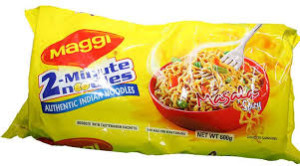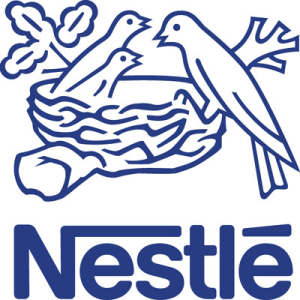NPR reports the Indian government is seeking $99 million in damages from Swiss food and beverage giant Nestlé over the recent food scare involving the Maggi brand of instant noodles that are a household staple in India.
 The class action, filed late Tuesday before India’s National Consumer Disputes Redressal Commission, accuses Nestlé of “gross negligence, apathy and callousness.”
The class action, filed late Tuesday before India’s National Consumer Disputes Redressal Commission, accuses Nestlé of “gross negligence, apathy and callousness.”
The government had ordered the popular snack cleared from the country’s shelves in June, after India’s food and safety regulators said they found unacceptable levels of lead in some samples, as well as the presence of monosodium glutamate, despite a label that said “No MSG.”
In response, Nestlé pulled nearly 400 million packets of its No. 1-selling brand from Indian stores.
Dismissing the allegations, Nestlé Chairman Peter Brabeck told the Swiss newspaper Handleszeitung that Indian authorities forced Nestlé to burn 29,000 tons worth of “quality” food in the instant noodle soup dispute. He’s quoted as saying, “Laboratories in the United States, Britain, Australia and Singapore did not find anything harmful in the noodles. Our products are safe for consumers.” Brabeck added, “Nevertheless, the case in India is not harmless and should not be underestimated.”
The food safety scare that has been a commercial disaster for Nestlé has also exposed issues with India’s food safety regulatory system.



 vehicle, or production process associated with the dough could be identified for certain to have contributed to the contamination.
vehicle, or production process associated with the dough could be identified for certain to have contributed to the contamination. appears to be flour. These cans were found at the following retail locations: Your Independent Grocer on Strandherd Drive and Sobeys on Greenbank Drive in Nepean, Ontario.
appears to be flour. These cans were found at the following retail locations: Your Independent Grocer on Strandherd Drive and Sobeys on Greenbank Drive in Nepean, Ontario. DNA testing of E. coli found in an unopened package of cookie dough at Nestle’s plant in Danville, Va., determined the genetic fingerprint of the E. coli found at the plant is different than E. coli that has been linked to a 30-state outbreak that has sickened at least six dozen people, and that an altogether different strain of E. coli was found in dough recovered from the home of a victim.
DNA testing of E. coli found in an unopened package of cookie dough at Nestle’s plant in Danville, Va., determined the genetic fingerprint of the E. coli found at the plant is different than E. coli that has been linked to a 30-state outbreak that has sickened at least six dozen people, and that an altogether different strain of E. coli was found in dough recovered from the home of a victim..jpg) A FDA type said the dough had been manufactured on February 10, 2009 but had not yet been shipped.
A FDA type said the dough had been manufactured on February 10, 2009 but had not yet been shipped..jpg) The next morning, the U.S. Food and Drug Administration warned consumers not to eat any varieties of prepackaged Nestle Toll House refrigerated cookie dough due to the risk of contamination with E. coli O157:H7. At the same time, Nestlé announced a voluntary recall of all Toll House refrigerated cookie dough products, “out of an abundance of caution.”
The next morning, the U.S. Food and Drug Administration warned consumers not to eat any varieties of prepackaged Nestle Toll House refrigerated cookie dough due to the risk of contamination with E. coli O157:H7. At the same time, Nestlé announced a voluntary recall of all Toll House refrigerated cookie dough products, “out of an abundance of caution.”